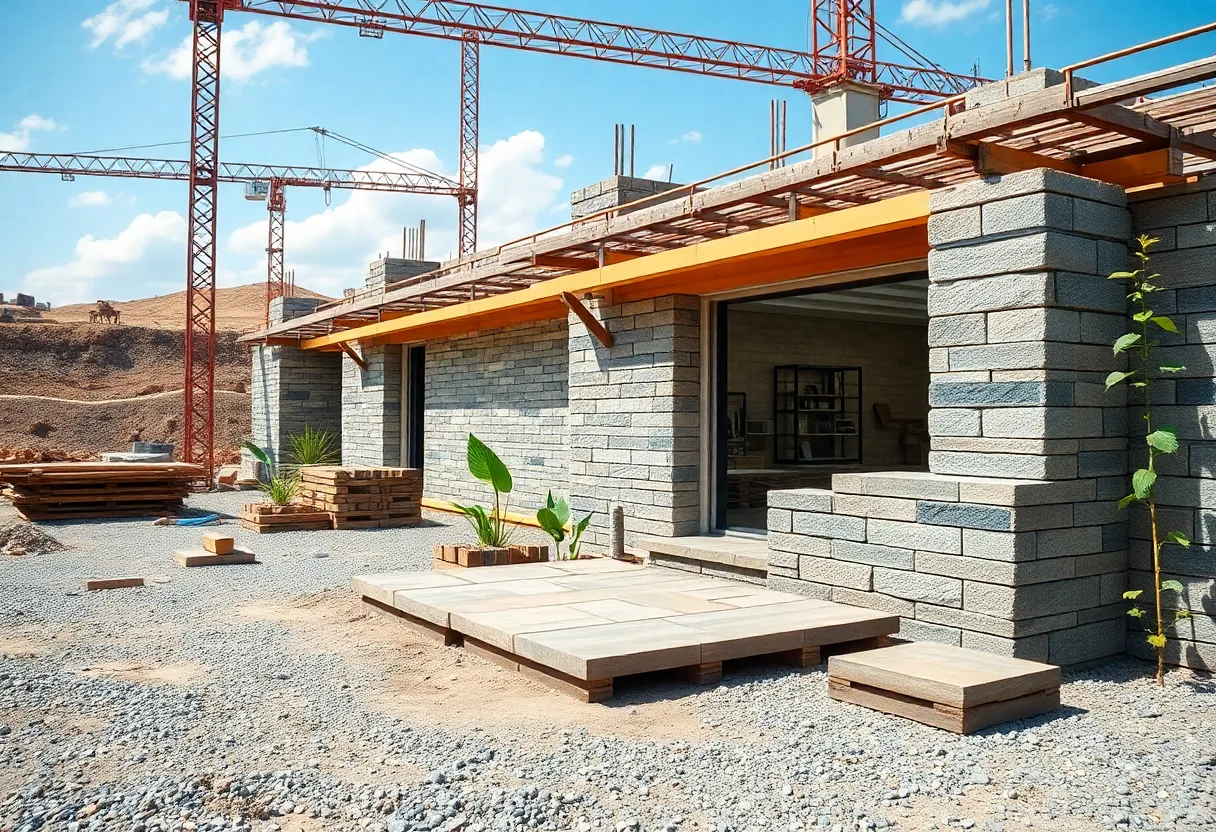News Summary
Researchers at the Colorado School of Mines are innovating ways to convert mine tailings into valuable construction materials like geopolymer bricks and ceramic tiles. This approach not only mitigates environmental impact but also enhances the supply of critical minerals, such as lithium and cobalt, essential for high-tech industries. By focusing on recycling mining waste, the initiative supports a circular economy and promotes domestic production of these vital materials, ultimately driving economic opportunities and sustainable practices in the mining sector.
Golden, Colorado – Researchers at the Colorado School of Mines are paving the way for a revolutionary approach to mining waste by developing processes to convert mine tailings into valuable construction materials. This innovation not only addresses environmental concerns associated with tailings but also aims to bolster the supply of critical minerals essential for various high-tech industries.
Mine tailings consist of the waste material remaining after the ore has been processed. Traditionally viewed as an environmental burden, these tailings can contain significant amounts of valuable materials, including critical minerals such as lithium, cobalt, and rare earth elements. These minerals are crucial for technologies used in energy, communication, defense, and medical fields.
The innovative research led by associate professor Reza Hedayat is focused on producing construction materials from mine tailings, such as geopolymer bricks, lightweight aggregates, and ceramic tiles. The goal is to meet stringent performance standards while minimizing the environmental footprint associated with traditional mining practices.
According to research findings, approximately 90% of mined ore can end up as tailings, which are often disposed of rather than repurposed. Studies have shown that these tailings not only present a significant environmental challenge but also constitute an often-overlooked opportunity for the extraction of valuable minerals. Hedayat’s approach involves a dual-use strategy that focuses on both recovering economically viable minerals and transforming what cannot be extracted into useful construction materials.
The recycling of critical minerals through mine tailings can significantly enhance the domestic supply chain and support the transition towards a circular economy. By transforming tailings into construction materials, the mining industry can reduce the need for newly mined resources, decrease carbon emissions, and extend the lifecycle of available materials. This approach aligns closely with national strategic interests regarding sustainable practices and resource management.
Hedayat’s research is part of a larger initiative by the U.S. Department of Energy aimed at increasing domestic production of critical minerals through the development of value-added products. The implications extend beyond environmental benefits; they also promise economic opportunities by establishing local facilities near mining sites. Such facilities would promote the reuse of waste materials, decrease transportation impacts, and stimulate regional economies.
Currently, the market conditions make it challenging to recover these valuable byproducts economically. Therefore, there is a pressing need for collaborative efforts among mining companies, educational institutions, and government agencies to seek policy support, develop pilot projects, and streamline processes related to recovery and reuse operations.
Research indicates that the U.S. could considerably meet its growing demand for critical minerals by enhancing recovery methods applied to mining waste. A study from Colorado School of Mines highlighted that nearly all critical minerals utilized in modern technologies exist in processed ore but often remain trapped in tailings. Fortunately, even small recoveries of these minerals could significantly diminish America’s reliance on imports, bolstering national sustainability goals.
In this context, the potential recovery from under 10% of cobalt and less than 1% of germanium currently lost in tailings could supply various U.S. markets. The study emphasizes that most elements, aside from platinum and palladium, could be sourced domestically with improved recovery techniques.
Through Hedayat’s research, the Colorado School of Mines underscores the untapped potential of mine tailings, positioning them as valuable resources rather than just waste. By showcasing the link between sustainable materials development and critical mineral supply chains, this innovative research pushes for a notable transformation in how the mining sector operates, paving the way towards a more sustainable and economically viable future.
Deeper Dive: News & Info About This Topic
HERE Resources
Additional Resources
- Mines Newsroom: Reimagining Mine Waste
- Wikipedia: Mine Tailings
- Mining.com: America’s Critical Minerals in Mining Waste
- Google Search: Critical Minerals
- Earth.com: Buried Treasure in Critical Minerals
- Encyclopedia Britannica: Mining
- Chemistry World: Unrecovered Byproducts from US Mines
- Google Scholar: Mine Waste Critical Minerals
- Mining Technology: The Hidden Value of Mine Waste
- Google News: Mine Waste Recycling
Author: STAFF HERE BALTIMORE WRITER
The BALTIMORE STAFF WRITER represents the experienced team at HEREBaltimore.com, your go-to source for actionable local news and information in Baltimore, Baltimore County, and beyond. Specializing in "news you can use," we cover essential topics like product reviews for personal and business needs, local business directories, politics, real estate trends, neighborhood insights, and state news affecting the area—with deep expertise drawn from years of dedicated reporting and strong community input, including local press releases and business updates. We deliver top reporting on high-value events such as the Baltimore Book Festival, Preakness Stakes, and Artscape. Our coverage extends to key organizations like the Baltimore Chamber of Commerce and Visit Baltimore, plus leading businesses in shipping and healthcare that power the local economy such as the Port of Baltimore and Johns Hopkins Medicine. As part of the broader HERE network, we provide comprehensive, credible insights into Maryland's dynamic landscape.





